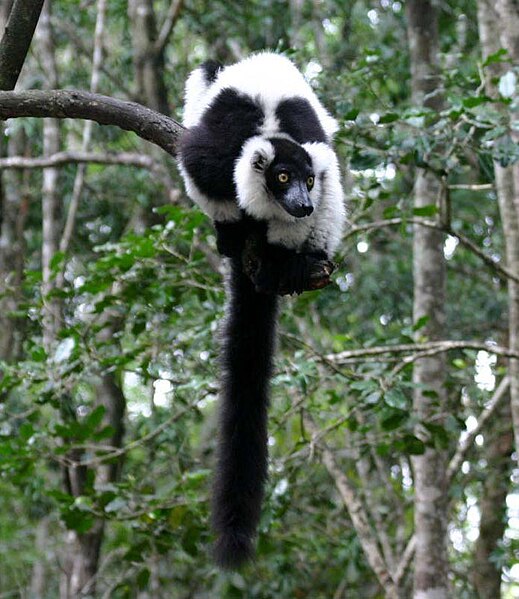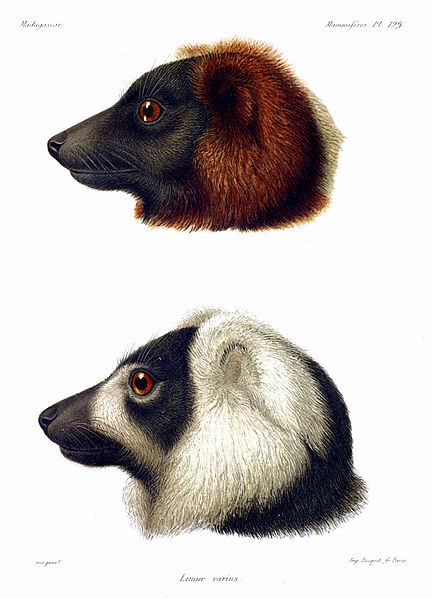The ruffed lemurs of the genus Varecia are strepsirrhine primates and are the largest extant lemurs within the family Lemuridae. Like all living lemurs, they are found only on the island of Madagascar. Formerly considered to be a monotypic genus, two species are now recognized: the black-and-white ruffed lemur, with its three subspecies, and the red ruffed lemur.
Ruffed lemur
Color print of the two ruffed lemur species from Alfred Grandidier's L'Histoire politique, physique et naturelle de Madagascar. (1892)
Profile of a typical ruffed lemur overbite
Foot of a ruffed lemur, showing the toilet-claw on the second toe
Lemurs are wet-nosed primates of the superfamily Lemuroidea, divided into 8 families and consisting of 15 genera and around 100 existing species. They are endemic to the island of Madagascar. Most existing lemurs are small, have a pointed snout, large eyes, and a long tail. They chiefly live in trees and are active at night.
Lemur
A life restoration of Babakotia radofilai, a sloth lemur that became extinct less than two thousand years ago
Close-up of a ruffed lemur's foot, showing the toilet-claw on the second toe and nails on all other toes
A six-tooth version of the strepsirrhine toothcomb in a ring-tailed lemur, with canine-like premolars behind it







